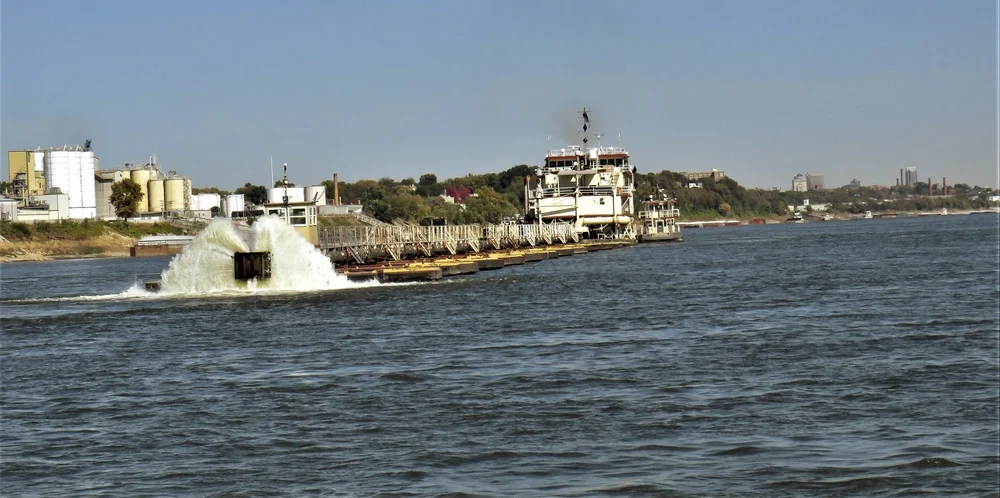Preparing for the 2024 Dredging Season
The U.S. Army Corps of Engineers’ Dredge Potter, managed by the St. Louis District, is launching its 2024 dredging season to ensure safe navigation for commercial vessels on the Illinois and Mississippi Rivers. In 2023, due to drought conditions, the 92-year-old vessel and its crew removed 6.3 million cubic yards of sand, silt, and clay from 31 locations on the riverbed.
During the winter, the crew conducted routine maintenance and repairs at the service base to prepare for this season. Skilled tradesmen completed in-house repairs to crucial components of the material pumping process, including:
- Rebuilding the pump room gearbox
- Rebuilding the pedestal bearing
- Rebuilding the head hoist block for lifting the dustpan
Additionally, they installed a quick-release system on the dredge disposal pipeline to enhance safety. The sleeping quarters and bathroom areas were also updated.
Maintaining Safe Navigation Channels
“Many thanks to all the dedicated and hardworking personnel who work in extreme conditions to maintain a safe navigation channel throughout the St. Louis District, supporting the nation’s economy,” said Lou Dell’Orco, chief of operations. “We continue to provide a common operating picture with integrated real-time surveys, dredging locations, forecasts, and feedback so our partners can make informed decisions regarding river shipping.”
The Role of the Dredge Potter Crew
The Potter, operated by a civilian crew of 53 working around the clock, functions as an underwater excavator, removing sand, silt, and clay buildup from the river bottom. The material is then pumped outside the navigation channel through a pontoon or self-floating pipeline to keep the channel open during low water conditions.
Recognizing Excellence in Operations
Last year, Captain Brian Ragsdale received the Chief of Engineers Operation and Maintenance Castle Award for his commitment to safety and mission-focused attitude during the low-water conditions on the Mississippi River. Navigating this complex, ever-changing environment requires a proactive approach to maintain operational efficiency. The crew’s success hinges on unity, teamwork, and partnerships.
Collaborative Efforts for Continuous Navigation
During the last two dredging seasons, characterized by persistent low water, collaboration between districts throughout the Mississippi Valley Division enabled the use of shared dredge assets, immediate delivery of real-time data, and advanced measures to anticipate problem areas. These strategies allowed the St. Louis District to maintain authorized navigation channel dimensions without restrictions and mitigate impacts. Continuous focus on a common operating picture with partners in the navigation industry and the U.S. Coast Guard ensured the unimpeded flow of maritime commerce.
The Economic Impact of the Mississippi River
The Mississippi River, one of the busiest waterways in the United States, moves 578 million tons of cargo annually, saving $12.5 billion in transportation costs. The mission of the U.S. Army Corps of Engineers dredges, particularly the Dredge Potter, is vital to maintaining navigation, a task to which the crew is dedicated.
